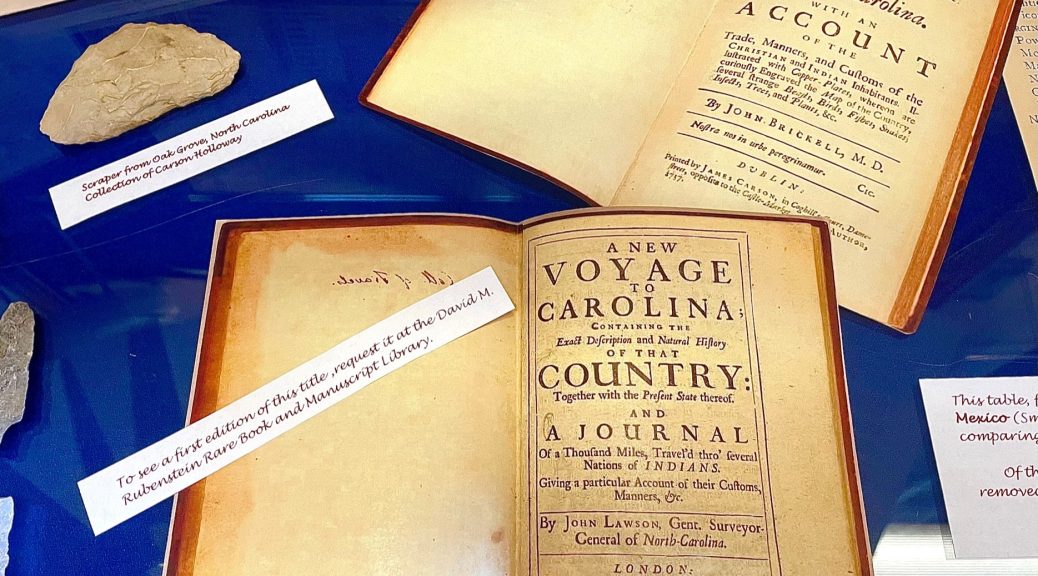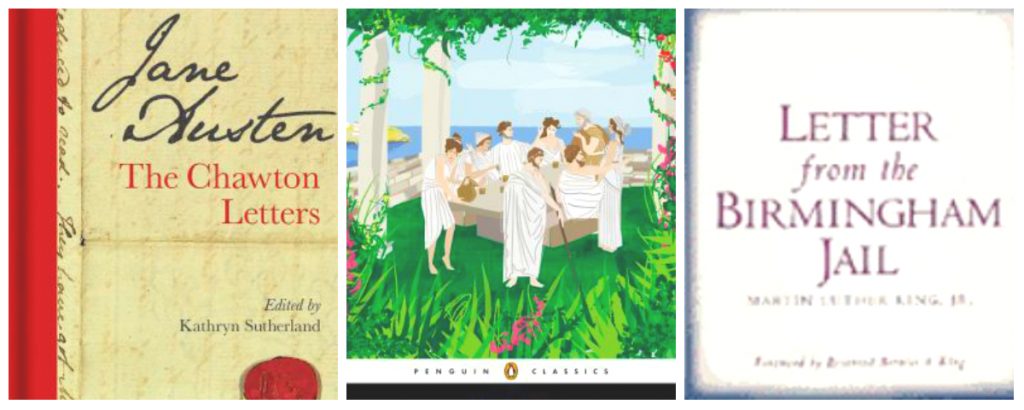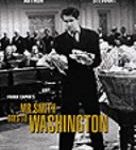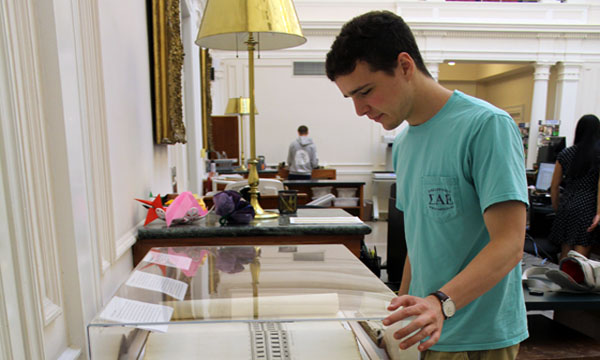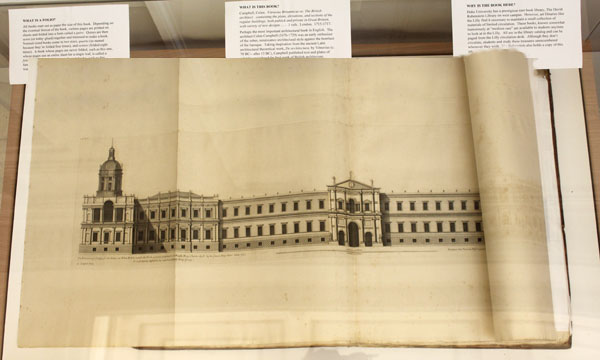Native Americans in North Carolina:
the Path from the Past to the Present
The research and suggested resources presented in the article Imagining Duke’s Campus in 1000 AD inspire the Lilly Library exhibit: Native Americans in North Carolina: the Path from the Past to the Present. Tangible artifacts and reference material highlighting the history of Native Americans in North Carolina carry us together on a journey over time to the campus experience of today. The exhibit presents historical evidence predating European contact, records and accounts of the university’s Native American student experience, and a look at the extent of Native American tribal reach in present day North Carolina.
North Carolina: The Arrival of Europeans

When the first Europeans arrived in what they called Carolina, the 16th century surveyor John White depicted in detail the established villages and individuals living on the land near Roanoke. A century later John Lawson catalogued the peoples and bounty of the land he traveled. His account A New Voyage to Carolina (produced in 1709) revealed the diversity of nature especially flora and of the nations of Native Americans. An original edition of Lawson’s book is found in the Rubenstein Library collection but does not circulate.
For Duke community members with NetIDs who wish to examine Lawson’s work, reprints and online versions are readily available.
Duke: The Arrival of Joseph S. Maytubby

The relationship between Duke and its Native American constituents goes back further in history than one might expect. In 1892, Trinity College (the predecessor to Duke University) saw the arrival of Joseph S. Maytubby on its campus in Durham. Maytubby, a member of the Chickasaw tribe became the first Native American to receive a degree from Trinity College. An excellent student, he served as president of the Hesperian Literary Society, was involved with the Trinity Archive literary magazine, played football, and, as a capstone to his stellar academic career, his oratory skills won the Wiley Gray Medal competition for the 1896 commencement.
Duke Magazine Retro: Native Americans at Trinity in the Nineteenth Century provides more insight into university history and Mr. Maytubby’s experience.
Today: the Path Continues
In present day, the Duke Native American Student Alliance serves as a resource and advocates on behalf of Native American Students on campus. Read its mission statement to learn more. One element of NASA’s stated mission is to advance the awareness of Native American culture throughout campus and the state.

It is not generally known that North Carolina has the largest Native American population east of the Mississippi River. North Carolina is home to eight tribes recognized tribes by the state, including the Eastern Band of the Cherokee Nation – the only federally recognized Native American community in North Carolina. This exhibit offers a glimpse into the complicated and often uncomfortable history of the Native American tale.
The Lilly Library exhibit Native Americans in North Carolina: the Path from the Past to the Present is on display until March 1, 2022.
Curated by Librarians Greta Boers and Carson Holloway. Artifacts on display are from the collections of Carson Holloway and Greta Boers.


